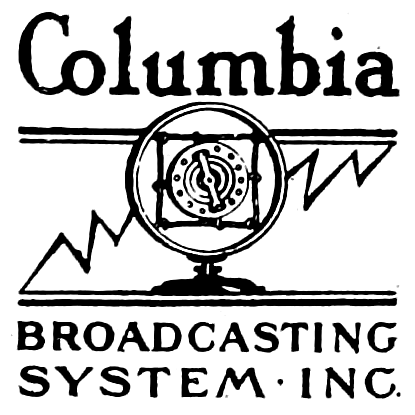

January 18, 1929…CBS Becomes A Broadcaster
January 18, 1929…CBS Becomes A Broadcaster
Until this day in 1929, the Columbia Broadcasting System was merely a program service providing radio entertainment features to a string of 16 stations connected by an AT&T line. With the purchase of the A.H. Grebe, Atlantic Broadcasting Company’s Manhattan based station, WABC…CBS itself was on the air. (November 2, 1946, WABC call letters changed to WCBS).
There is an interesting story on why this happened, which involves WOR, but first, here is my brief history of The Columbia Broadcasting System.
In early 1927 Arthur Judson, the impresario of the Philadelphia and New York Philharmonic orchestras, approached the National Broadcasting Company (NBC), which at the time was America’s only radio network, with an idea to promote classical music by airing orchestra performances. NBC declined.
Undaunted, Judson founded his own broadcasting company, which he named United Independent Broadcasters, Inc. (UIB).
Lacking a strong capital base, UIB struggled to stay afloat. However, in the summer of 1927, Judson found a rich partner in the owner of Columbia Phonograph Company, Louis B. Sterling. Columbia Phonograph bought UIB’s operating rights for $163,000. The new company was named the Columbia Phonograph Broadcasting System.
Columbia Phonographic took over on September 18, 1927, with a presentation by the Howard Barlow Orchestra with network affiliate WOR in Newark, New Jersey, feeding fifteen other UIB network stations. Operational costs were steep, particularly the payments to AT&T for use of its land lines, and by the end of 1927, Columbia Phonograph wanted out.
In early 1928, Judson sold the network to brothers Isaac and Leon Levy, owners of the network’s Philadelphia affiliate WCAU, and their partner Jerome Louchenheim. Soon after, the Levy brothers had involved their soon to be relative, 26 year old William S. Paley, who’s sister was engaged to Leon Levy. Paley was the son of a well-to-do Philadelphia cigar maker.
With the record company out of the picture, Paley quickly streamlined the corporate name to Columbia Broadcasting System. Paley had come to believe in the power of radio advertising since his family’s La Palina cigars had doubled their sales after young William convinced his elders to advertise on radio the year before.
Although the network was growing, it did not own a radio station of its own…yet. In December of 1928, CBS bought A.H. Grebe’s Atlantic Broadcasting Company in New York City with the call letters WABC (no relation to the current WABC), which would become the network’s flagship station.
Now, here’s the story behind why CBS bought WABC.
It was Grebe’s hope to expand the Atlantic Broadcasting Company into a network operation, now that NBC has shown the way. But in September 1928, an opportunity arose that would make this station one of the major players in radio history.
The Columbia chain did not own an outlet in New York. Its local affiliate was WOR, which became convinced they could produce local programs of equal quality to the CBS shows.
When WOR refused to clear additional time for the CBS network, WABC stepped in to become the second NYC affiliate, a move it hoped would justify a power increase. For a few weeks in late 1928, WABC was the CBS station on Sunday, Tuesday, and Thursday, with WOR carrying the network on the other four days, but soon WOR dropped CBS completely.
In November 1928, Columbia offered to buy either of its New York area affiliates, and President William S. Paley negotiated with both Grebe and Bamberger. WOR’s facilities were superior, but Paley chose the less-expensive WABC, and in December the sale was completed.
The sale price was $390,000, though the appraised value of the studios and transmitter was just $130,000. Grebe had apparently let the WABC studios go to seed, for Paley reported a mess on the seventeenth floor of Steinway Hall. Among the assets were goods accepted as payment from sponsors; jewelry, kitchenware, and reportedly even some live chickens.
WABC came with a bonus though…it was located in the brand new Steinway Hall at 109 West 57th Street in Manhattan, across the street from the Carnegie Hall.
Concerts were broadcast from the Steinway concert halls downstairs, but upstairs, there were only 4 rooms. In need of studios and offices, the network moved in July 1929 into the bottom six floors of a new building at 485 Madison Avenue at 52nd Street, in the heart of the advertising community.
Initially, six studios were built on the 4th, 5th and 6th floors of the CBS space, and the bottom three floors were the CBS sales and programming offices. Eventually, CBS would take over the building and occupy if for the next 35 years.
Within a few years, CBS had nearly 50 stations in its network. Since the number of affiliates a network possesses determines the number of people it can reach, which in turn determines what a sponsor is charged, CBS was soon on firm financial ground. By 1930 CBS had 300 employees and total sales of $7.2 million. Enjoy and share! -Bobby Ellerbee
The latter building was later home to Mad magazine (as “485 MADison Avenue”).
Here is another early logo